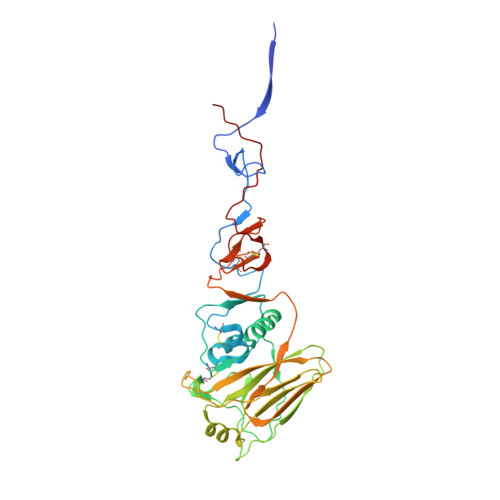X-ray structure of the hemagglutinin of a potential H3 avian progenitor of the 1968 Hong Kong pandemic influenza virus.
Ha, Y., Stevens, D.J., Skehel, J.J., Wiley, D.C.(2003) Virology 309: 209-218
- PubMed: 12758169
- DOI: https://doi.org/10.1016/s0042-6822(03)00068-0
- Primary Citation of Related Structures:
1MQL, 1MQM, 1MQN - PubMed Abstract:
We have determined the structure of the HA of an avian influenza virus, A/duck/Ukraine/63, a member of the same antigenic subtype, H3, as the virus that caused the 1968 Hong Kong influenza pandemic, and a possible progenitor of the pandemic virus. We find that structurally significant differences between the avian and the human HAs are restricted to the receptor-binding site particularly the substitutions Q226L and G228S that cause the site to open and residues within it to rearrange, including the conserved residues Y98, W153, and H183. We have also analyzed complexes formed by the HA with sialopentasaccharides in which the terminal sialic acid is in either alpha2,3- or alpha2,6-linkage to galactose. Comparing the structures of complexes in which an alpha2,3-linked receptor analog is bound to the H3 avian HA or to an H5 avian HA leads to the suggestion that all avian influenza HAs bind to their preferred alpha2,3-linked receptors similarly, with the analog in a trans conformation about the glycosidic linkage. We find that alpha2,6-linked analogs are bound by both human and avian HAs in a cis conformation, and that the incompatibility of an alpha2,6-linked receptor with the alpha2,3-linkage-specific H3 avian HA-binding site is partially resolved by a small change in the position and orientation of the sialic acid. We discuss our results in relation to the mechanism of transfer of influenza viruses between species.
- Department of Pharmacology, Yale University School of Medicine, 333 Cedar Street, New Haven, CT 06520, USA.
Organizational Affiliation:




















